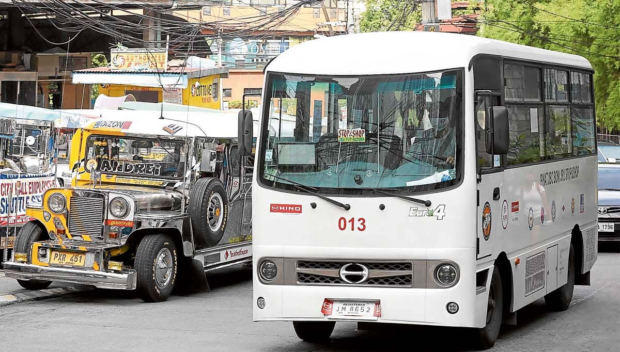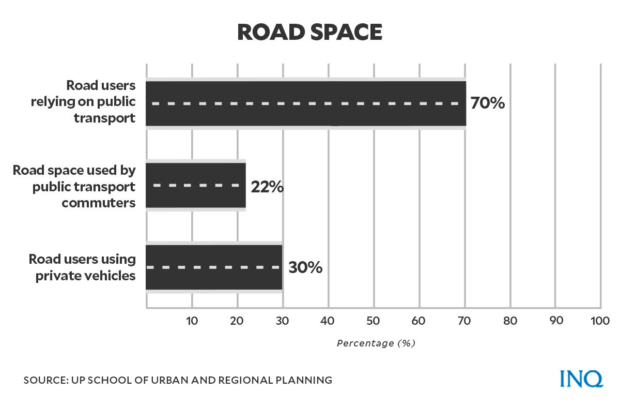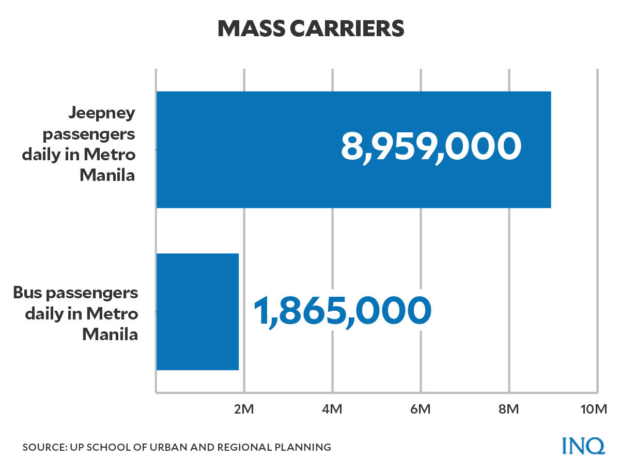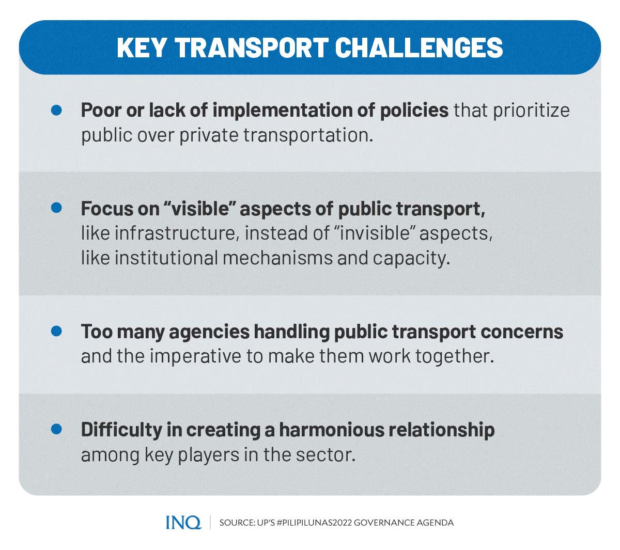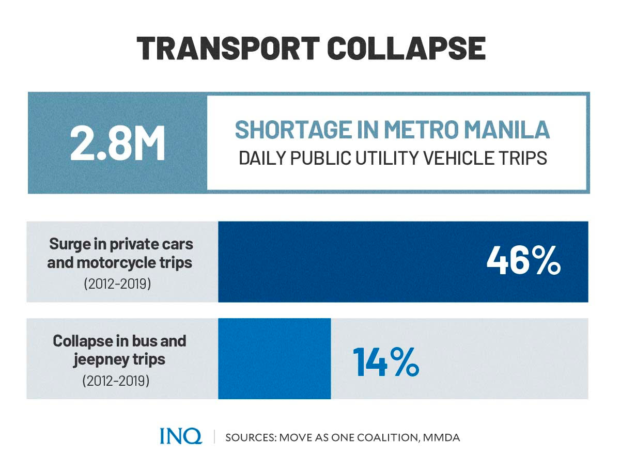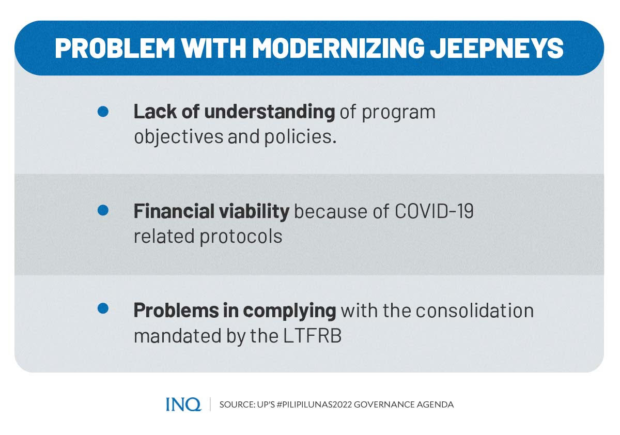UP transport blueprint: End confusion, review priorities
MANILA, Philippines—While the Department of Transportation (DOTr) has “done a lot” in the past six years, its new head said “it was not enough” to address all the road problems that confront Filipinos every day.
Transportation Secretary Jaime Bautista said on Monday (July 4) that the department will strive to improve land transportation, stressing that the struggles of Filipinos on the road are not acceptable.
Bautista, who served as president of Philippine Airlines, said that as initially discussed with President Ferdinand Marcos Jr., the government will work on transforming the transportation system and elevate it to “global standards”.
He said this as the DOTr seeks to provide “accessible, affordable, comfortable, and safe transportation service” by “focus[ing] our efforts at moving passengers and goods that use our roads, airports, seaports, and railways.”
The Move As One Coalition (Move As One) said last year that “we need to fix the great inequality in our roads,” stressing that while 70 percent of road users in Metro Manila rely on public transportation, they are crammed into only 22 percent of road space.
Article continues after this advertisementBautista said he already asked all DOTr employees to help him: “I will not pretend to have all the solutions […] I ask for your help in making this administration succeed in solving the seemingly insurmountable transport concerns of Filipinos.”
Article continues after this advertisementHowever, realizing this for over 10 million Filipinos who rely on public transportation every day will not happen in an instant. As stressed by the University of the Philippines (UP), the government should first initiate system reforms.
The university’s policy document, “#PILIpiLUNAS2022 Governance Agenda,” stated that presently, these are the key challenges that confront the Philippines’ public transport sector.
- The poor or lack of implementation of policies like the National Transport Policy that prioritizes public transportation over private transportation
- The focus on the “visible” aspects of public transport such as infrastructure instead of focusing on “invisible” aspects such as institutional mechanisms and capacity
- Too many agencies handling public transport concerns and thus the imperative to make them work together
- The difficulty in creating a harmonious relationship among key players in the sector such as the government, operators, financiers, private users, and commuters
‘Deadly spiral’
UP said traffic congestion and inefficiency in the management of the public transportation system in the Philippines have led to economic losses as high as P3.5 billion in 2017.
The Japan International Coordination Agency stressed in 2018 that if no interventions are made in Metro Manila, the country is expected to lose P5.4 billion—vehicle operating cost and time spent by drivers and passengers—every day.
While Metro Manila’s traffic congestion level eased through the years, as revealed by TomTom International B.V.—71 percent in 2019, 53 percent in 2020, 43 percent in 2021—the transportation sector is now in a “deadly spiral”.
The past few weeks have seen commuters and public utility vehicle (PUV) drivers suffering because of the transportation crisis, which is even exacerbated by rising fuel costs that forced some drivers to stop plying their routes.
According to Bautista, the DOTr will continue former President Rodrigo Duterte’s “Build, Build, Build (BBB)” program, saying that “we do not need to reinvent the wheel […] these big-ticket projects truly deserve continuity.”
However, Move As One said that by 2030, the “transport supply shortage” in Metro Manila will be as high as 2.8 million daily passenger trips even if the BBB program was completed “on time.”
From 2012 to 2019, the number of bus and jeepney trips in the region already collapsed by 14 percent: “There has been hardly any increase in the supply of public transportation over the past decade.”
‘Single entity needed’
To address the crisis, UP recommended the “creation of a unified public transport authority that would do away with the ‘labyrinth of government,’ leading to overlaps and inconsistent policies and programs.”
It was stressed that the public transport sector first needs to have a “multi-stakeholder, multi-perspective approach to address concerns at several levels of the government and society.”
Dr. Cresencio Montalbo, of the UP School of Urban and Regional Planning, proposed that there should only be a single entity for plans and operations, saying that having several agencies involved creates a fragmented system of implementation.
Currently, the system is composed of at least eight agencies such as the DOTr, Land Transportation Franchising and Regulatory Board (LTFRB), Department of Interior and Local Government, and the Metropolitan Manila Development Authority.
“To address this, collaborative governance is necessary to consistently implement policies, from the national government to the local government units, and from the PUV operators and drivers to the commuting public,” UP said.
The local government unit of General Santos City, for example, demonstrated this collaborative partnership in its implementation of programs by cooperating with its local transportation stakeholders.
The consultation with stakeholders has revealed challenges of information failure, limited incentives, weak public transport infrastructure, low earnings, and returns on investment.
“A unified agency that has the capacity to oversee and address public transport concerns should be established for a more efficient, effective, and inclusive implementation of public transport programs,” UP recommended.
Shift in priority
UP said there is likewise a need to shift priority from the tangible components of transport such as infrastructure to intangible ones such as capacity building and institutional mechanisms to improve the transport system in a holistic manner.
Benjamin De la Peña, chief executive officer of the Shared-Use Mobility Center, previously said the BBB program will not make a difference in people’s lives if the government does not aspire to make public transportation efficient.
UP stressed the importance of crowdsourcing involving drivers, operators, commuters, and other stakeholders that could potentially address the lack of available data on public transport and guide policymakers in addressing the sector.
“Through crowdsourcing, stakeholders can be tapped to compile data from the ground for evidence-based decision-making processes. Prioritizing institutional capacity should require a thorough evaluation of the national government agencies involved,” it said.
Move As One said that from 2010 to 2021, P2.8 trillion worth of resources went to road construction, widening and maintenance while only P40 billion went to projects that will improve walking, cycling and road-based public transportation.
For UP, the government and other stakeholders must identify interventions that will prioritize mass public transport over private vehicles and will improve public transportation services.
Based on data from the Transformative Urban Mobility Initiative, compared with private car-only lanes, bus lanes enable roads to carry up to 29 times more people, cycling lanes up to eight times more, and pedestrian lanes up to 10 times more.
‘Needed’ modernization
Since 2017, the government, in its bid to reform and modernize the public transportation system, implemented the Public Utility Vehicle Modernization Program (PUVMP).
The PUVMP envisions a restructured, modern, well-managed and environmentally sustainable transport sector where drivers and operators have stable, sufficient and dignified livelihoods while commuters get to their destinations quickly, safely and comfortably.
UP said that as of September 2021, the program has already consolidated about 54.39 percent of all PUVs and that the Philippine National Standard for PUVs Classes 1 to 4 was created to standardize the classification of different vehicles.
To address the increasing market price of modern PUVs and to reduce operators’ out-of-pocket expenses, the government subsidy was increased from PhP 80,000.00 to PhP 160,000.00 per unit.
However, UP stressed that while the objectives of the program are promising, there is a lack of legislation that supports the institutionalization of the program and that there are concerns regarding the implementation:
- Lack of understanding of the program’s objectives, and policies
- The financial viability because of COVID-19 related protocols
- Problems in complying with the consolidation mandated by the LTFRB
“A particular challenge of the modernization strategy is the need to ensure that the technology creates minimal displacement among small direct stakeholders,” the institution said.
For instance, the promotion of modern technology, such as the use of electric vehicles, without a clear plan on how to support the inclusion of the sector’s independent micro, small, and medium enterprises has resulted in the displacement not only of micro and small drivers and family-run businesses but commuters as well.
“There is more to the modernization of the public transport system than the introduction of new technology, important as this is, to make it work.”
